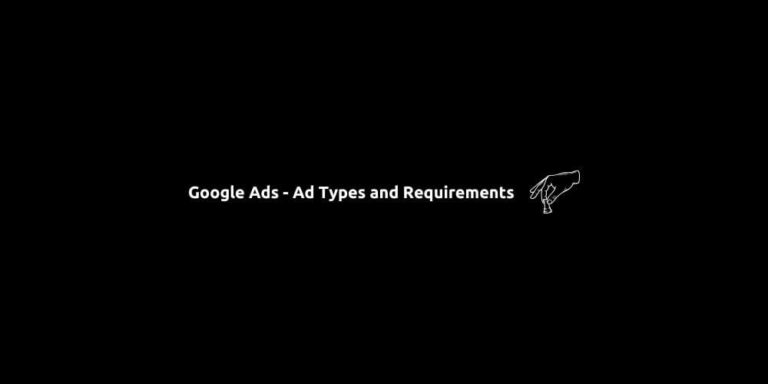Dynamic Search Ads: Everything You Need to Know
Dynamic Search Ads (DSAs) offer a powerful, automation-driven approach to capturing high-intent traffic. Especially for advertisers with extensive websites or rapidly changing inventories.
At their core, DSAs eliminate the need for manually creating ads for every product or service you offer. Instead, Google crawls your website and automatically generates relevant headlines and landing pages based on the user’s search query. That makes Dynamic Search Ads an excellent solution for businesses aiming to maximize coverage and visibility without micromanaging every keyword.
In this article, we’ll dive deeper. We’ll explain what Google Dynamic Search Ads are, how they work, how to set them up correctly, and who can benefit most from using them in their digital advertising strategy.
Content:
- What is Google Dynamic Search Ads?
- How Google Dynamic Search Ads Work?
- How to Setup Google Dynamic Search Ads?
- Who Should Use Google Dynamic Search Ads?
- How to Get Started With Google Ads?
What is Google Dynamic Search Ads?
Google Dynamic Search Ads (DSAs) are a type of search campaign that automatically generates ads and chooses landing pages based on the content of your website. Behind the scenes, DSAs use Google’s indexing system to match a user’s search with relevant pages on your site.
The main benefit of this campaign type is automation. By dynamically generating ads, DSAs help advertisers capture more relevant traffic without the need to manually create ads for every possible search query. This is particularly useful for websites with a large inventory of products or services, where creating ads manually would be time-consuming and inefficient.
Another significant advantage of Dynamic Search Ads is real-time adaptation. If your site content changes or new products are added, Google can automatically reflect those updates in your ads. This ensures relevance and accuracy.
Another reason makes this system so effective is its ability to reach long-tail keywords and niche search queries that might otherwise be overlooked. Many businesses unknowingly miss out on traffic because they don’t have keywords set up for every variation of their offerings. DSAs help fill in those gaps.
DSAs are also compatible with your other search campaigns. You can use them to supplement keyword-based strategies by capturing traffic you may have missed.
Overall, DSAs are a smart choice for businesses that want to scale their search advertising efforts efficiently, reduce manual workload, and increase reach.
How Google Dynamic Search Ads Work?
Dynamic Search Ads function by scanning your website and using its content to match search queries and generate ads automatically. When someone searches for something relevant to your site, Google identifies the most appropriate landing page and crafts a dynamic headline that closely matches the user’s intent.
Here’s how the process works behind the scenes:
- Website Crawling: Google indexes your website, just like it does for SEO. It analyzes page titles, meta descriptions, on-page content, and internal linking structure. DSAs support dynamic ad targets, meaning you can specify which sections of your site Google should focus on. You can target all webpages, specific categories, or even pages with particular words in the URL.
- Query Matching: When a user types a search query, Google checks if your site has a relevant page that matches the intent of the query—even if it doesn’t match any of your current keywords.
- Ad Creation: Google dynamically generates a headline based on the search term and chooses the most relevant landing page. The description lines of the ad are provided by you, but the headline and final URL are automated. DSAs often lead to higher click-through rates (CTR) when properly implemented. Since the headlines are customized to match the user’s search query and website content, the ads feel more relevant and personalized, which naturally improves performance.
- Auction Process: The ad enters the auction just like a regular Search Ad, competing based on your bid strategy, quality score, and relevance.
How to Setup Google Dynamic Search Ads?
Setting up Google Dynamic Search Ads requires a few strategic decisions and technical configurations. While the campaign is largely automated, success hinges on how well you define the scope and structure of your targeting.
Here’s a step-by-step guide to get started:
- Campaign Creation: In Google Ads, select “Search Campaign” and choose “Website traffic” or “Sales” as your goal. When prompted, select “Dynamic Search Ads” as the campaign subtype.
- Website Domain & Language: Enter your website domain and the primary language used on the site. Google will use this information to crawl and analyze your content.
- Targeting Options: You can choose between
- All webpages
- Specific page categories (based on Google’s classification)
- Custom rules (like URLs containing “/sale”)
- Page feeds (if you want full control)
- Ad Group Setup: Create Dynamic Ad Groups based on how you want to structure your ads. Each ad group can have its own targeting rules and ad creatives.
- Ad Creation: You don’t write headlines. Instead, you supply the description lines. Keep these focused on benefits, features, or call-to-actions.
- Bidding Strategy: Choose a bidding strategy. Since DSAs often target broader search intent, automated bidding strategies can be effective here.
- Negative Keywords: To prevent your ads from appearing for irrelevant searches, set up a strong list of negative keywords.
- Ad Extensions: Just like other search campaigns, you can add sitelinks, callouts, and structured snippets to enrich your DSAs.
Once your campaign is live, monitor its performance closely. Check search term report to see which queries are triggering your ads, and refine your negative keyword list accordingly. Also, review which landing pages are converting best and adjust your targeting rules to favor high-performing URLs.
Who Should Use Google Dynamic Search Ads?
Google Dynamic Search Ads are especially beneficial for businesses with large websites, frequently changing inventories, or expansive product catalogs. Here are some scenarios where DSAs shine:
E-Commerce Stores
Retailers with hundreds or thousands of products often struggle to create keyword-based ads for each item. DSAs simplify this process by automatically creating relevant ads based on what’s in stock and live on your site.
Service Providers with Broad Offerings
If your business offers a wide range of services across different locations or industries, DSAs help capture long-tail searches related to each service variation.
Content-Rich Websites
Sites with a lot of informative blog posts, guides, or articles can also benefit from DSAs. You can drive traffic to high-performing content pages, increase engagement, and generate leads.
Advertisers Seeking Keyword Expansion
If your current search campaigns are performing well but you suspect you’re missing traffic from untapped keyword variations, DSAs can uncover those gaps. By analyzing the Search Term Report from DSA campaigns, you can discover new keyword ideas for your manual campaigns.
That said, DSAs may not be suitable for every business. If your website has limited content, poorly structured pages, or outdated information, you may struggle to get the most out of this format. Additionally, businesses in sensitive or highly regulated industries may prefer more manual control.
How to Get Started With Google Ads?
Google Ads is a powerful advertising platform that can transform your business by connecting you with potential customers at the right time. Whether you’re aiming to boost sales, increase website traffic, or build brand awareness, Google Ads offers the tools to achieve your goals.
However, success requires a strategic approach, continuous learning, and regular optimization. With the right planning and execution, Google Ads can be a game-changer in your digital marketing strategy. And this is what we do at SS&T Digital. 👇






